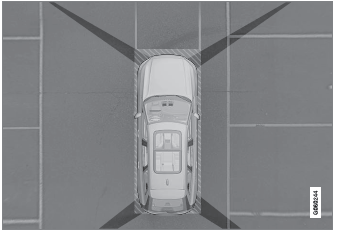Volvo XC90 2015-2025 Owners Manual / Starting and driving / Winter driving
Volvo XC90: Starting and driving / Winter driving
It is important to check the vehicle before driving in cold/snowy conditions to make sure it can be driven safely.
Before the cold season arrives:
- Make sure the engine coolant contains 50% antifreeze. This mixture helps protect the engine from frost erosion down to approx. –35 °C (–31 °F). Do not mix different types of antifreeze as this could pose a health risk.
- Keep the fuel tank well filled to prevent condensation from forming.
- Check the viscosity of the engine oil. Oil with low viscosity (thinner oil) improves cold-weather starting and reduces fuel consumption when driving with a cold engine.
- Check the condition and charge level of the start battery. Cold weather places greater demands on the start battery and reduces its capacity.
- Use washer fluid containing antifreeze to help prevent ice from forming in the washer fluid reservoir.
See separate section for engine oil recommendations.
Slippery driving conditions
To help optimize traction and roadholding, Volvo recommends using snow tires on all wheels whenever there is a risk of snow or ice on the road.
NOTE
Certain countries require use of winter tires by law. Not all countries permit the use of studded tires.
Practice driving on slippery surfaces under controlled conditions to learn how the vehicle reacts.
 Preparing for a long trip
Preparing for a long trip
It is important to have the vehicle's systems and equipment checked carefully
before driving long distances.
Check that
the engine is running properly and that fuel consumption is normal
there are no leaks (fuel, oil or other fluid)
the brake pedal is functioning properly
tire tread depth and air pressure are at correct levels...
 Driving through standing water
Driving through standing water
It may be necessary to drive the vehicle through standing water e.g. deep
puddles or flooding on the road. This must be done with great caution.
The vehicle can be driven through water up to a depth of 45 cm (17 in) at no
more than walking speed...
Other information:
Volvo XC90 2015-2025 Owners Manual: Selecting type of assistance for Lane Keeping Aid
The driver can determine what types of assistance Lane Keeping Aid (LKA1) should provide if the vehicle veers from its lane. Select Settings My Car IntelliSafe in the center display's Top view. Under Lane Keeping Aid Mode, select what assistance the function should provide: Assist the driver will receive steering assistance but no warning...
Volvo XC90 2015-2025 Owners Manual: Creating and registering a Volvo ID
A Volvo ID can be created in two ways. If your Volvo ID was created with the Volvo On Call app, the Volvo IDmust also be registered to the vehicle to enable access to the Volvo ID services. Creating a Volvo ID with the Volvo ID app Download the Volvo ID app from Download Center in the center display's App view...
Copyright © 2025 www.voxc90.com

